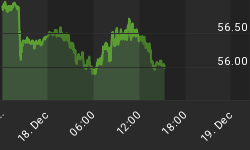This week the all-seeing, all-knowing National Bureau of Economic Research announced that the Great Recession officially ended in June of 2009. If only they were a little quicker on the draw. In the same month that the recession officially ended, we penned an article entitled "United States on Clearance." To quote from it directly:
We continue to believe that prices will be increasing in the near future due to both inflation and the recovery of the global economy. We see signs of these things emerging every day.
A little vindication certainly is nice every now and again.
Now, with the not-so-great recession officially behind us, fading into the annals of history, we're ready to move on, both topically and economically.
The fact that more than a year has passed since the recession ended may prove to be the final nail in the coffin of the argument for a possible double-dip. As we have long-argued, this country was never poised for a double-dip, not since the Fed took steps in inject sufficient liquidity to keep markets solvent.
While obviously this hasn't solved all our nations' problems, it did turn what could have been a double-dip into more of an economic stagnation as recovery dollar spending ran dry. In that sense, as we've repeatedly argued, the economy has not declined since the initial recovery ran its course, but they certainly haven't gotten much better either.
Before the real recovery can begin in this country - the one that will take this country back to its place as a prominent global economic power - some changes still need to be made.
Most notably, this country needs guidance and incentive from Washington, rather than uncertainty, burdensome regulation, and impotent foreign policy. Another hindrance the US could and likely will do without is another round of quantitative easing on top of already long-depressed interest rates. Judging by the Fed's announcement on Tuesday, QE2 sounds less than likely.
And yet, the market seems continually worried about the "imminent" collapse of the US dollar. Every day seems to see more money piling into tradition inflation/calamity hedges ranging from gold and Treasury Inflation-Protected Securities (TIPS for short) to corporate and government debt.
Many major mutual fund companies continue to report substantial flows of retail investor assets into fixed income securities (Neil Anderson, Fixed Income Still Dominates Mutual Fund Flows...). Why investors have chosen to make such a move as interest rates hover at 30-year lows, we may never know.
The biggest comfort about worries of the dollar collapsing, though, comes from outside this country; from our neighbors across the pond. Some may remember that earlier this summer the fear permeating the world's financial markets was the prospective failure of the EU, a notion which even we did not dismiss.
Admittedly, Europe is still a long way from having worked through its fiscal and economic woes, which are numerous and substantial, but the fear of the EU's failure seems to have mostly subsided. So too will fears surrounding the dollar or the breakdown of the US economy, but certainly at a higher cost to investors.















